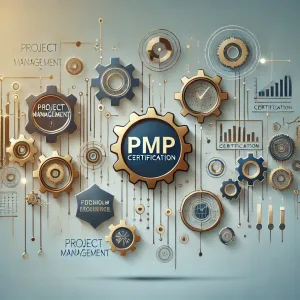Introduction to Vendor Management Lifecycle
Within IT, the vendor management lifecycle (VML) plays a crucial role in ensuring that organizations effectively manage their relationships with external suppliers and service providers. This lifecycle encompasses a series of structured phases that guide organizations from the initial identification of vendors through to their eventual offboarding.
Definition of the Vendor Management Lifecycle
The vendor management lifecycle is a comprehensive framework that outlines how enterprises manage their interactions with vendors throughout the duration of their contracts. It includes all activities related to vendor relationships, ensuring alignment with business objectives, compliance with regulations, and the delivery of value to the organization [1][10].
Phases of the Vendor Management Lifecycle
The vendor management lifecycle consists of several key phases:
- Selection: This initial phase involves identifying potential vendors, evaluating their capabilities, and selecting the most suitable candidates based on specific criteria such as cost, quality, and reliability. Effective selection is critical as it sets the foundation for a successful vendor relationship [1][8].
- Onboarding: Once a vendor is selected, the onboarding process begins. This phase includes gathering necessary documentation, such as tax forms and licenses, and integrating the vendor into the organization’s systems and processes. A well-structured onboarding process ensures that vendors are prepared to meet the organization’s needs from the outset [9][10].
- Performance Management: After onboarding, ongoing performance management is essential. This phase involves monitoring vendor performance against agreed-upon metrics, conducting regular reviews, and addressing any issues that arise. Effective performance management helps maintain high standards and fosters continuous improvement in vendor relationships [5][11].
- Offboarding: The final phase of the lifecycle is offboarding, which occurs when a vendor relationship is terminated. This process includes ensuring that all contractual obligations are fulfilled, transitioning responsibilities, and conducting exit interviews to gather insights for future vendor selections. Proper offboarding is vital to mitigate risks and maintain a positive reputation [1][10].
Significance of Effective Vendor Management in IT Projects
Effective vendor management is particularly significant in IT projects, where the reliance on external vendors for software, hardware, and services is prevalent. The benefits of a well-managed vendor lifecycle include:
- Risk Mitigation: By actively managing vendor relationships, organizations can identify and address potential risks early, ensuring compliance with regulations and minimizing operational disruptions [12][11].
- Cost Optimization: Streamlined vendor management processes can lead to cost savings by reducing inefficiencies and ensuring that organizations get the best value from their vendors [6][15].
- Enhanced Collaboration: A structured approach to vendor management fosters better communication and collaboration between organizations and their vendors, leading to improved project outcomes [11][14].
Challenges in Traditional Vendor Management
Within IT, vendor management is a critical component that can significantly influence project success. However, traditional vendor management practices often present several challenges that can hinder efficiency and effectiveness. Here are some of the key issues faced by IT managers and project managers:
- Manual Processes Leading to Inefficiencies: Many organizations still rely on manual processes for vendor management, which can be time-consuming and prone to errors. This reliance on outdated methods can lead to delays in contract negotiations, performance monitoring, and compliance checks, ultimately affecting project timelines and outcomes [2][6].
- Lack of Real-Time Data and Insights: Traditional vendor management often lacks the capability to provide real-time data and insights. Without access to up-to-date information, project managers may struggle to make informed decisions regarding vendor performance, compliance status, and risk management. This gap can result in missed opportunities for optimization and improvement [4][10].
- Difficulty in Communication and Collaboration with Vendors: Effective communication and collaboration with vendors are essential for successful project execution. However, traditional methods can create barriers, leading to misunderstandings and misalignment of expectations. The absence of centralized communication platforms can complicate interactions, making it challenging to track discussions, agreements, and changes [9][11].
- Increased Risk of Compliance Issues and Vendor-Related Failures: As regulations and compliance requirements evolve, managing vendor compliance becomes increasingly complex. Traditional vendor management practices may not adequately address these challenges, leading to a heightened risk of compliance failures. This can expose organizations to legal liabilities and reputational damage, particularly if vendors do not adhere to industry standards or contractual obligations [2][4][15].
The Rise of Digital Tools in Vendor Management
The vendor management lifecycle has evolved significantly, particularly with the advent of digital tools and platforms. These innovations are not only streamlining processes but also enhancing the overall efficiency of vendor management. Here’s an exploration of how technology is transforming this critical aspect of project management.
Overview of Digital Tools and Platforms Available for Vendor Management
Digital tools for vendor management encompass a wide range of applications designed to facilitate various stages of the vendor lifecycle, from selection to performance monitoring. Key features of these tools include:
- Centralized Vendor Information: Applications that centralize vendor data help project managers maintain comprehensive records, making it easier to access and analyze vendor performance metrics.
- Performance Monitoring: Tools that enable real-time tracking of vendor performance against predefined KPIs allow for timely interventions and adjustments, ensuring that project goals are met efficiently.
- Automated Communication: Digital platforms often include automated communication features that streamline interactions with vendors, reducing the time spent on administrative tasks and enhancing collaboration.
- Cost Management: Many vendor management solutions provide insights into spending patterns, helping project managers control costs through careful sourcing and negotiation strategies [9][13].
Trends in Technology Adoption Among Project Managers and IT Teams
The adoption of technology in vendor management is on the rise, driven by the need for efficiency and transparency. Some notable trends include:
- Increased Use of Cloud-Based Solutions: Many organizations are shifting towards cloud-based vendor management systems, which offer scalability and accessibility, allowing teams to manage vendor relationships from anywhere.
- Integration with Other Project Management Tools: There is a growing trend of integrating vendor management tools with existing project management software, creating a seamless workflow that enhances data sharing and collaboration across teams [11][12].
- Focus on Data Analytics: Project managers are increasingly leveraging data analytics to make informed decisions regarding vendor selection and performance evaluation, leading to more strategic partnerships [10][14].
Case Studies of Successful Implementation
Several companies have successfully implemented digital tools to enhance their vendor management processes:
- A manufacturing company utilized a vendor management application that centralized all vendor data and automated performance reviews. This approach not only streamlined their vendor selection process but also improved vendor compliance rates by 30%, significantly enhancing overall project outcomes [10][12].
Key Technologies Transforming Vendor Management
The vendor management lifecycle (VML) is crucial for ensuring that organizations effectively manage their relationships with suppliers and service providers. The integration of technology into this lifecycle is revolutionizing how IT and project managers operate, enhancing efficiency, communication, and decision-making. Here are some key technologies that are transforming vendor management:
- Vendor Management Systems (VMS): VMS platforms are designed to streamline the entire vendor management process. They provide functionalities such as standardized onboarding, contract lifecycle coordination, and performance scorecards. These systems help organizations maintain a centralized repository of vendor information, automate workflows, and ensure compliance with regulations. By leveraging VMS, project managers can enhance visibility into vendor performance and make informed decisions based on real-time data [1][6].
- Collaboration Tools: Effective communication is vital in managing vendor relationships. Collaboration tools, such as Slack, Microsoft Teams, and Asana, facilitate seamless interaction between project teams and vendors. These platforms enable real-time messaging, file sharing, and project tracking, which can significantly reduce misunderstandings and improve response times. By fostering a collaborative environment, project managers can ensure that all stakeholders are aligned and informed throughout the vendor management lifecycle [2][3].
- Data Analytics and Reporting Tools: The ability to track vendor performance is essential for optimizing relationships and ensuring compliance. Data analytics tools provide project managers with insights into key performance indicators (KPIs) and return on investment (ROI) metrics. By utilizing these tools, managers can analyze vendor performance trends, identify areas for improvement, and make data-driven decisions. This analytical approach not only enhances accountability but also supports strategic planning for future vendor engagements [4][14].
- Artificial Intelligence (AI) and Automation: AI and automation are increasingly being integrated into vendor management processes, particularly in vendor selection and performance evaluation. AI algorithms can analyze vast amounts of data to identify the best vendors based on specific criteria, such as past performance and compliance history. Additionally, automation tools can streamline repetitive tasks, such as contract renewals and performance reviews, allowing project managers to focus on more strategic activities. This technological advancement not only improves efficiency but also enhances the overall quality of vendor relationships [5][13].
Benefits of Streamlined Vendor Management Through Technology
The integration of technology into the vendor management lifecycle has transformed how organizations manage their vendor relationships, leading to numerous advantages. Here are some key benefits of adopting technology in vendor management:
- Increased Efficiency and Reduced Operational Costs: Technology solutions such as Vendor Management Systems (VMS) automate various aspects of the vendor management process, from selection to performance tracking. This automation reduces the time spent on manual tasks, allowing project managers to focus on strategic decision-making. As a result, organizations can achieve significant cost savings by streamlining operations and minimizing the resources required for vendor management [1][6].
- Enhanced Visibility and Control Over Vendor Relationships: Digital tools provide centralized data management, enabling organizations to maintain a comprehensive view of their vendor relationships. This visibility allows project managers to monitor vendor performance in real-time, assess compliance with contracts, and make informed decisions based on accurate data. Enhanced visibility fosters better control over vendor interactions, leading to improved outcomes [5][15].
- Improved Compliance and Risk Management: With the help of technology, organizations can better manage compliance and mitigate risks associated with vendor relationships. Automated tracking of performance metrics and compliance requirements ensures that vendors adhere to established standards. This proactive approach to risk management helps organizations avoid potential pitfalls and maintain a strong reputation in the market [6][12].
- Stronger Collaboration and Communication with Vendors: Technology facilitates seamless communication and collaboration between organizations and their vendors. Cloud-based platforms and collaborative tools enable real-time sharing of information, project updates, and feedback. This improved communication fosters stronger partnerships, enhances problem-solving capabilities, and ultimately leads to better project outcomes [4][9].
Implementing Technology in the Vendor Management Lifecycle
Within IT, the vendor management lifecycle is crucial for maintaining effective relationships with suppliers and service providers. The integration of technology into this lifecycle can significantly enhance efficiency, compliance, and overall performance. Here are practical steps for IT and project managers to implement technology effectively in their vendor management processes:
1. Assessing Current Vendor Management Processes and Identifying Gaps
Before introducing new technology, it is essential to conduct a thorough assessment of existing vendor management processes. This involves:
- Mapping out the current lifecycle: Document each stage from vendor identification to offboarding to understand how vendors are currently managed.
- Identifying inefficiencies: Look for bottlenecks, delays, or areas where manual processes are prone to errors. Common issues may include miscommunication, slow onboarding, or inadequate performance monitoring [1][13].
- Gathering feedback: Engage with team members who interact with vendors to gain insights into pain points and areas for improvement.
2. Choosing the Right Digital Tools Based on Organizational Needs
Selecting the appropriate technology is critical for successful implementation. Consider the following:
- Vendor management software: Look for platforms that centralize vendor information, streamline onboarding, and enhance compliance tracking. These tools can automate various aspects of the vendor management lifecycle, such as vendor selection and performance monitoring [3][8].
- Customization and scalability: Ensure that the chosen tools can be tailored to meet specific organizational needs and can scale as the business grows. This flexibility is vital for adapting to changing vendor relationships and project requirements [6][10].
- Integration capabilities: Choose tools that can seamlessly integrate with existing systems (e.g., project management software, financial systems) to ensure a cohesive workflow and data consistency.
3. Training Staff and Ensuring Buy-in from Stakeholders
Successful technology implementation hinges on user adoption. To facilitate this:
- Develop a training program: Create comprehensive training sessions for staff to familiarize them with the new tools and processes. This should include hands-on practice and real-world scenarios to enhance learning [4][14].
- Communicate benefits: Clearly articulate the advantages of the new technology to all stakeholders, emphasizing how it will improve efficiency, reduce risks, and enhance vendor relationships. This can help in gaining their support and commitment [5][12].
- Encourage feedback: Foster an environment where team members can provide feedback on the technology and processes, allowing for adjustments and improvements based on user experience.
4. Measuring Success and Continuously Improving the Vendor Management Process
To ensure that the technology is delivering the desired outcomes, it is important to establish metrics for success:
- Define key performance indicators (KPIs): Identify specific metrics to evaluate the effectiveness of the vendor management process, such as onboarding time, compliance rates, and vendor performance scores [2][11].
- Regular reviews: Conduct periodic assessments of the vendor management process to identify areas for further improvement. This could involve analyzing performance data, soliciting stakeholder feedback, and benchmarking against industry standards [7][9].
- Iterate and adapt: Use the insights gained from reviews to make informed adjustments to processes and technology, ensuring that the vendor management lifecycle remains efficient and aligned with organizational goals.
By following these steps, IT and project managers can effectively implement technology in the vendor management lifecycle, leading to improved vendor relationships and enhanced project outcomes. Embracing digital tools not only streamlines processes but also positions organizations to respond swiftly to changing market dynamics and vendor needs.
Future Trends in Vendor Management Technology
As IT and project managers seek to optimize their processes, several emerging trends and technologies are shaping the future of vendor management. Here are some key points to consider:
- The Role of Blockchain in Enhancing Transparency: Blockchain technology is increasingly being recognized for its potential to improve transparency in vendor management. By providing a decentralized and immutable ledger, blockchain can ensure that all transactions and interactions with vendors are recorded accurately and securely. This not only builds trust among stakeholders but also facilitates better compliance and accountability in vendor relationships, reducing the risk of fraud and errors [1][4].
- Predictive Analytics for Future Vendor Performance Assessment: Predictive analytics is revolutionizing how organizations assess vendor performance. By leveraging historical data and advanced algorithms, businesses can forecast future vendor performance and identify potential issues before they escalate. This proactive approach allows project managers to optimize inventory levels, anticipate supply chain disruptions, and enhance vendor relationships, ultimately leading to more informed decision-making and improved efficiency [2][3][9].
- Integration of Vendor Management with Broader Project Management Software: The integration of vendor management tools with broader project management software is becoming increasingly important. This trend allows for a more holistic view of project workflows, enabling managers to streamline processes and improve collaboration across teams. By consolidating vendor management within project management platforms, organizations can enhance visibility, track performance metrics, and ensure that vendor activities align with project goals [5][8].
- The Impact of Remote Work on Vendor Management Practices: The shift towards remote work has significantly influenced vendor management practices. As teams become more distributed, the need for digital tools that facilitate communication and collaboration with vendors has grown. Remote work necessitates the use of technology to maintain strong vendor relationships, manage contracts, and ensure compliance. This trend highlights the importance of adopting cloud-based solutions that enable real-time access to vendor information and facilitate seamless interactions, regardless of location [6][7].
Conclusion
In today’s fast-paced business environment, the integration of technology into the vendor management lifecycle is not just beneficial; it is essential. Digital tools and platforms have revolutionized how organizations manage their vendor relationships, enhancing efficiency and effectiveness at every stage of the lifecycle.
- Streamlining Processes: Technology plays a pivotal role in automating and optimizing vendor management activities. By implementing systems such as Contract Lifecycle Management (CLM), organizations can gain real-time insights into contract performance and compliance, which facilitates informed decision-making and reduces administrative burdens [2][4].
- Embracing Digital Transformation: IT and project managers are encouraged to embrace this digital transformation. The adoption of advanced vendor management applications centralizes and streamlines the entire vendor lifecycle, leading to improved governance, compliance, and cost optimization [12]. This shift not only enhances operational efficiency but also fosters stronger, more productive relationships with vendors.
- Evaluate and Upgrade: It is crucial for IT and project managers to evaluate their current vendor management processes critically. Consider the potential benefits of technological upgrades that can enhance transparency, improve communication, and mitigate risks associated with vendor relationships [5][8]. By leveraging technology, organizations can ensure they are not only keeping pace with industry standards but also positioning themselves for future success.
In conclusion, the role of technology in streamlining the vendor management lifecycle cannot be overstated. By adopting innovative digital solutions, organizations can transform their vendor management practices, leading to more strategic partnerships and better overall performance.
Find out more about Shaun Stoltz https://www.shaunstoltz.com/about/.
This post was written by an AI and reviewed/edited by a human.



